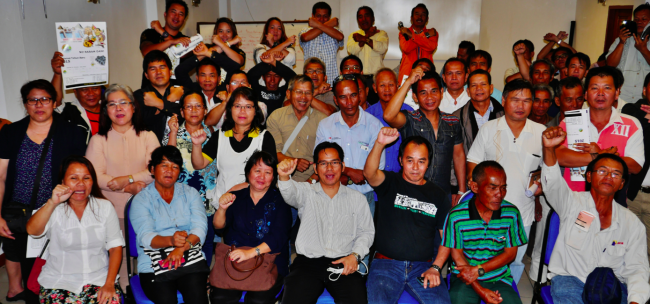

We, the above stated organizations are responding to the CEO of Sarawak Energy Berhad (SEB) Datuk Torstein’s statements (published in the Borneo Post on 1st Feb. 2015). In the article referred Torstein was defending the flooding of hundreds of square kilometres of forests and the homesteads of thousands of people in order to generate electricity for the heavy industries of the Sarawak Corridor of Renewable Energy (SCORE) With all due respect, we are raising the following contentions:
- SEB’s speculation that the damming of the river will stop flooding in certain locations is not grounded
in any studies that are either specific to the Rajang nor more general in relation to Sarawak. There was
no strategic environmental assessment, and no comprehensive basin-level studies to analyse how the
damming of the Rajang River at Murum and Bakun will impact the area in the long term. In particular,
there are no available studies that take into account variable modelling necessary due to fluctuating
rainfall patterns along the Rajang caused by climate change and the destruction of forest cover. There is
also no evidence to show that Murum or Bakun were built with flood mitigation purposes in mind.
Therefore, the claims made to date about flood mitigation are not grounded in science or backed by any
factual data. - If there is a need for a proactive response to flooding on the Rajang, there are less destructive ways to
do this than building large dams. Studies from around the world show that large hydroelectric dams tend
to destroy the resilience of the environment, upstream and downstream. While sediments get clogged in
the reservoir, the river flowing downstream scours the shoreline, causing erosion, dislodging roots of
trees, destroying natural barriers to flooding and reducing the productivity of agricultural land. - SEB’s conclusions are highly premature and not based on precautions raised by studies that their own company commissioned. The Environmental Impact Assessment for Murum Hydroelectric Project clearly states that catastrophic flooding could occur in the event of a technical failure or accident at Murum. The Bakun Dam was not built to withstand the extra water load from upstream. If SEB is so concerned about the impacts of flooding on our communities, why don’t local people around Bakun and Murum have full information about an emergency evacuation plan in the event of flooding?
- According to SEB, Murum, Bakun and future dams in Sarawak can be multi-purpose, but will primarily be used to power up heavy industries. These industries, including smelting and chemical manufacturing, will require the intensive spewing of toxic chemical pollutants that will undoubtedly poison our air and groundwater. The production of electricity, not flood control, is prioritized in dam operations. If floods were to happen, a toxic leak of disastrous proportions could affect all of us.
SEB asserts that resettlement of people affected by dams can lead to improved livelihoods. However, to date, SEB has yet to demonstrate they can manage resettlement in a way which respects fundamental principles outlined in the human rights treaties to which Malaysia is a signatory or the UN Declaration on the Rights of Indigenous Peoples, and leaves affected families better off than before. For example, the Penan and Kenyah displaced by the Murum Dam have yet to learn where land allocations they’ve been promised are located, and still have no access to any local schools or a health clinic that can serve their needs. Meanwhile, the skilled workforce for Murum is largely imported from abroad.
Without such basic infrastructure in place in Murum and no opportunities for dignified work, it is deceptive and disingenuous for SEB to claim that there would be livelihood improvements based on their track record at Murum. SEB and Torstein must be reminded that it is morally, socially, ethically and legally obliged to respect the rights of indigenous peoples who are affected or to be affected by its proposed mega HEP dams projects, particularly where the people have persistently expressed their objection and total rejection of such project. To ignore and disregard such stand taken by the people reflects total disrespect of their inherent rights and a deliberate attempt by the SEB and its management to sow discrimination and instill ill-feelings, enmity and vengeance on the local people.
If Torstein, a Norwegian citizen, genuinely intend to help Sarawak develop, why is he willing to recklessly risk the lives and wellbeing of thousands of Sarawakians in order to benefit a few, flouting the precautionary principle, which is accepted worldwide as best practice in public and international law?
Together, we assert that we can build a future in which there are still free-flowing rivers for our children and the coming generations to enjoy, a future that is forward-looking by relying primarily on alternative energies and not on the inundation of vast expanses of forest as well as lands protected and defended by their rightful owners. Not only would such a future benefit all living in Sarawak, but also stand as a model for Malaysia and the world.
Respectfully,
Mark Bujang
Executive Director
BRIMAS
Thomas Jalong
President
JOAS
Peter Kallang
Chairman
SAVE Rivers
Abun Sui
President GASAK
Romuld Siew
President TAHABAS
For queries please contact – Peter Kallang on 6013 – 833 1104
